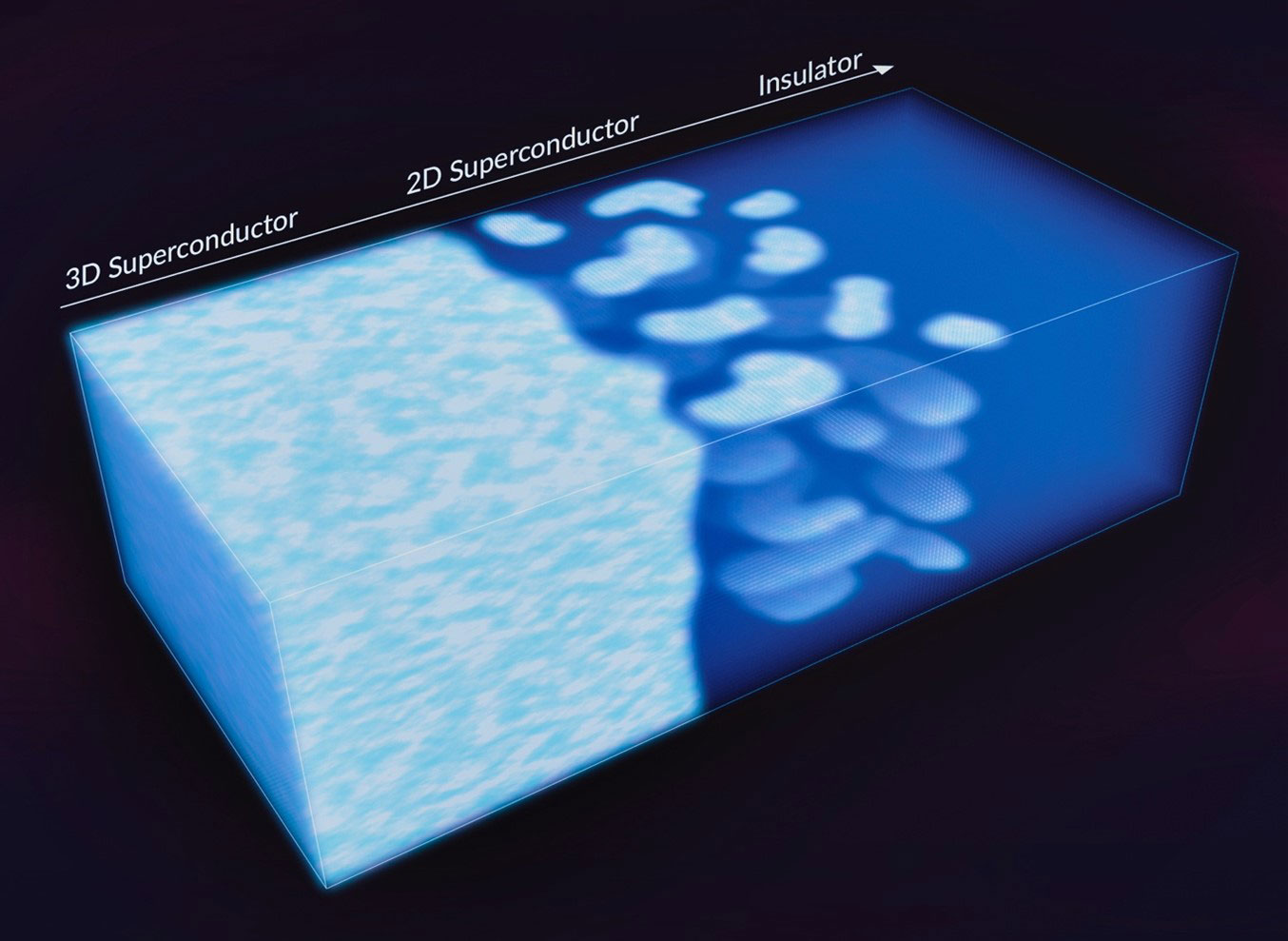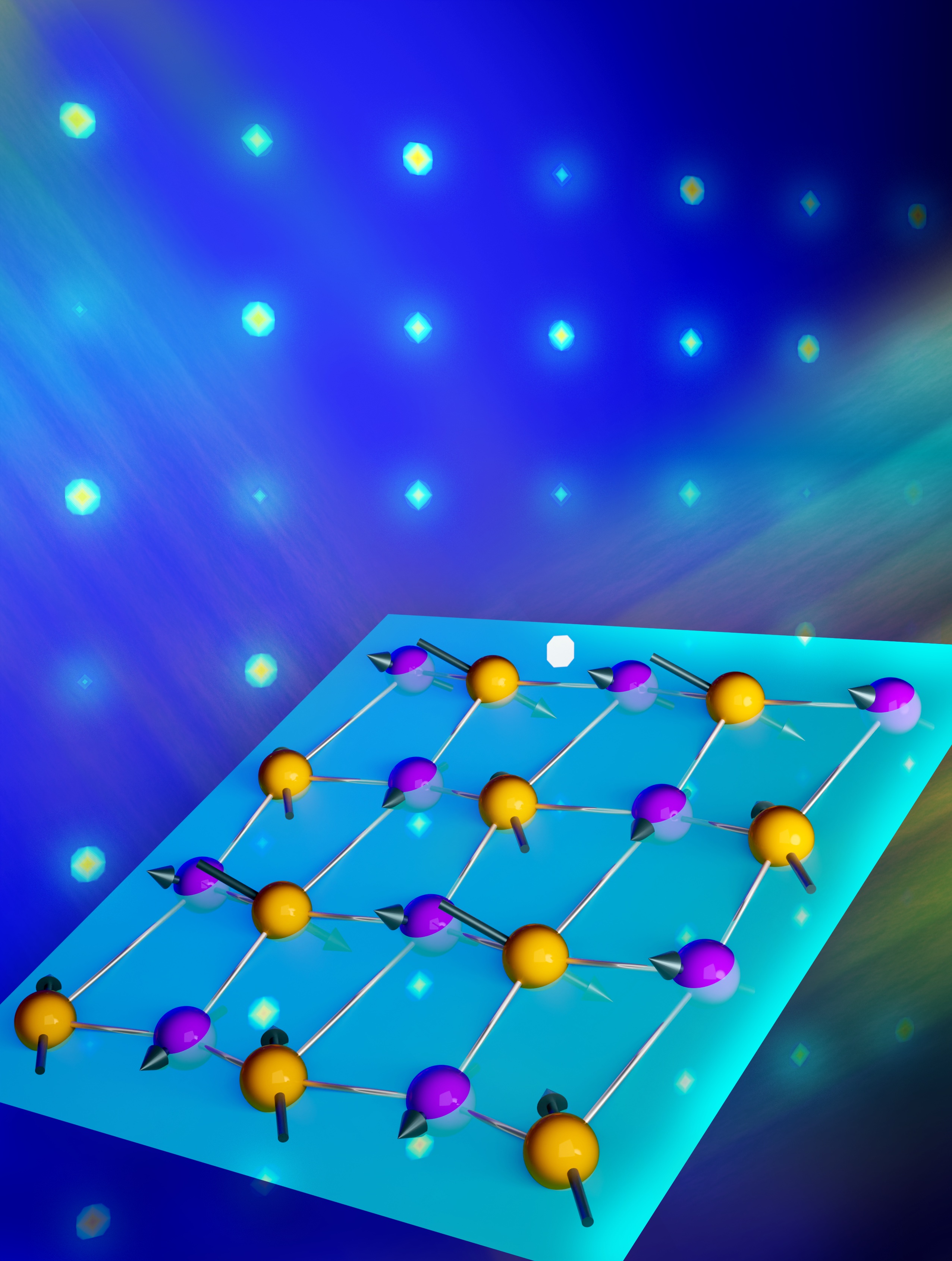Researchers Achieve Interdimensional Superconductivity
Three-dimensional superconducting electrons choose to cross over to a flatter alternate dimension.

The Science
In the typical materials that we encounter every day—and even in state-of-the-art chips in computers—electrons move around in three dimensions (3D). However, scientists can force electrons to move around in two dimensions (2D) by creating ultra-thin materials like graphene. In this work, however, researchers found that by adding superconductivity to 3D electrons in a bulk material, the superconducting electrons spontaneously collapse into 2D. They do so without any physical change or fabrication of the 3D material. When given the power to superconduct, the 3D electrons choose for themselves to live in a 2D world.
The Impact
This research unveiled a new phenomenon of “interdimensional superconductivity.” Using an advanced microscope, the experimenters directly imaged the 3D superconducting state as it approached an insulating phase. This allowed them to discover the spontaneous emergence of 2D superconducting “puddles.” These 2D “puddles” of electrons that form inside a 3D superconductor could be a way for some superconductors to reorganize themselves before undergoing an abrupt phase transition into an insulating state. This is what researchers call an “emergent” phenomenon, where a complex system exhibits behavior that emerges spontaneously. This might make it easier to fabricate 2D materials for electronics and other applications.
Summary
This work details signatures of a new phenomenon wherein a hidden “interdimensional” order emerges from a bulk 3D superconductor tuned to approach a phase transition to an insulator. The team included researchers from SLAC National Accelerator Laboratory, Stanford University, the Universidad Técnica Federico Santa María in Chile, and the Universidad de Los Andes in Colombia. Prior electrical transport measurements found that the superconductor–insulator transition of the compound BaPb1−xBixO3 demonstrated critical scaling behavior but inexplicably required parameters consistent only with two dimensions. In the research described here, scientists directly imaged the 3D superconducting state as it approached an insulating phase and discovered that signatures of a 2D granular superconducting phase spontaneously emerged at the transition. The research employed cryogenic scanning tunneling microscopy and spectroscopy measurements. Moreover, the properties of this phase precisely match the theory of “emergent electronic granularity” specific to two-dimensional materials. These findings posit that a 3D superconductor electronically reorganizes itself into a 2D granular superconductor before ultimately transforming to an insulator.
Contact
Hari Manoharan
SLAC National Accelerator Laboratory and Stanford University
manoharan@stanford.edu
Funding
This work was supported by the Department of Energy Office of Science, Basic Energy Sciences, Materials Sciences and Engineering Division.
Publications
Parra, C. et al. Signatures of two-dimensional superconductivity emerging within a three-dimensional host superconductor. Proceedings of the National Academies of Sciences 118, e2017810118 (2021). [DOI: 10.1073/pnas.2017810118]
Related Links
In a First, Scientists Watch 2D Puddles of Electrons Spontaneously Emerge in a 3D Superconducting Material, SLAC National Accelerator Laboratory.
Superconductivity Enters a New Dimension, Physics World.
Electrons Can Form Bizarre 2-D ‘Flatland’ in Superconductor, Scientific American 325, 1, 22 (July 2021). [DOI:10.1038/scientificamerican0721-22a]
Highlight Categories
Performer: University , DOE Laboratory



